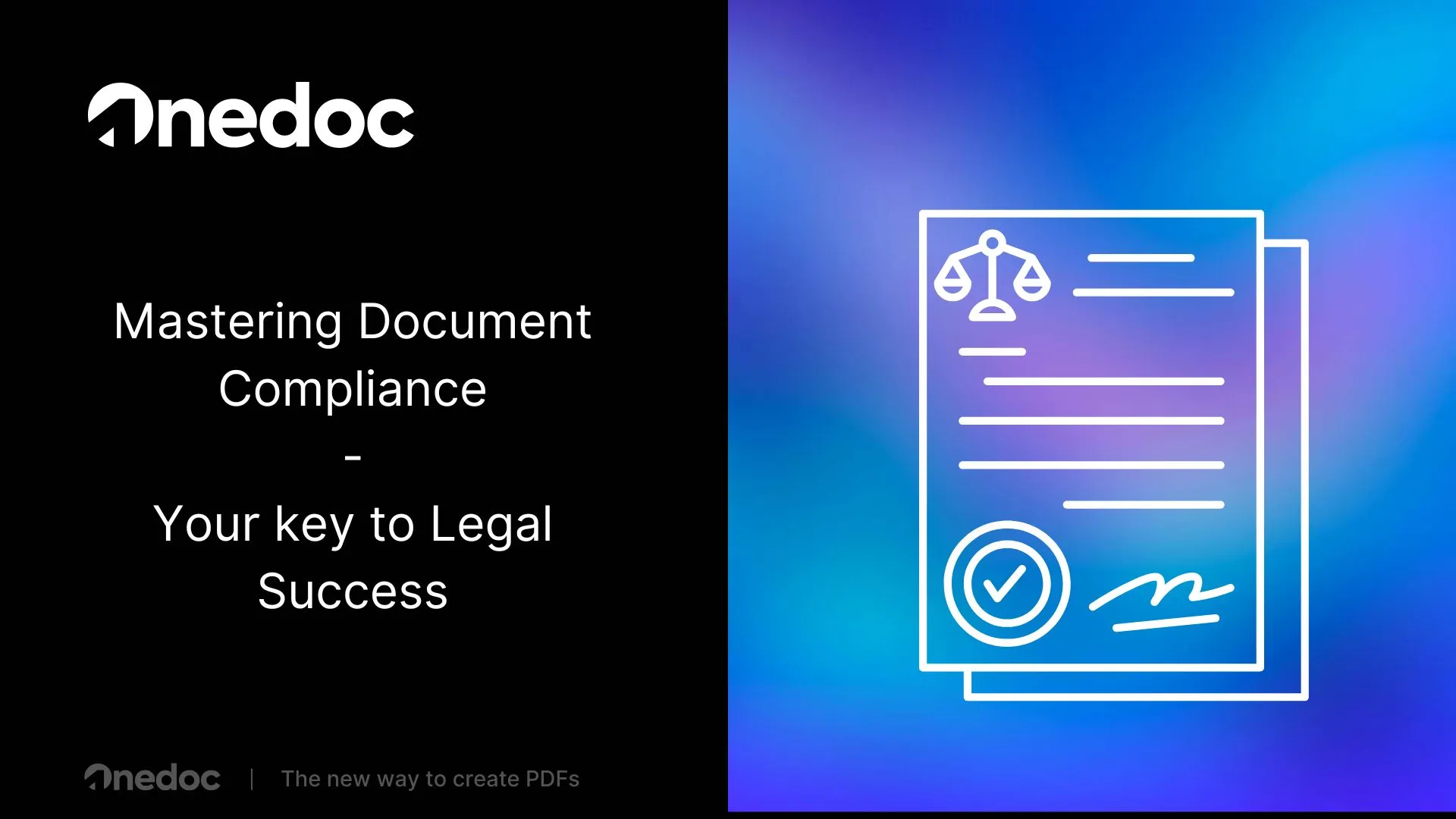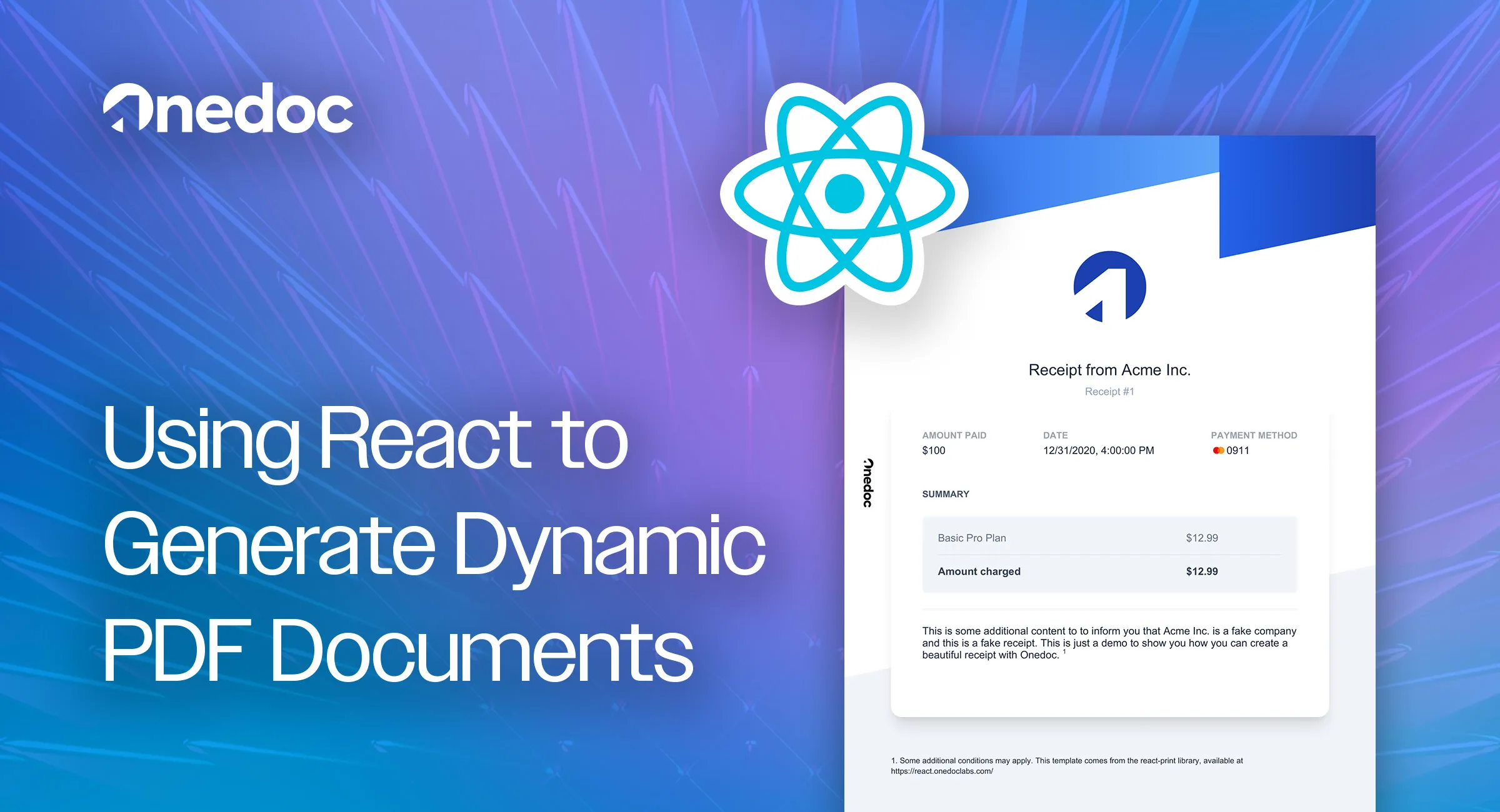
Mastering Document Compliance: Your Key to Legal Success
Monday, February 19, 2024
Introduction
The Importance of Document Compliance
Compliance is a critical aspect of document generation, especially in the legal world. It ensures that documents are created in accordance with the law and that they meet the necessary standards.
Compliance is particularly important in the context of legal documents, as these documents are often used to establish legal rights and obligations. A contract that is not compliant can be invalidated, and a court filling can be rejected by the court.
Moreover, compliance also helps to ensure that documents are clear, accurate, and easily understandable. It ensures that the parties involved understand their rights and obligations, and avoids disputes and misunderstandings between them.
Challenges in Document Compliance
Many legal professionals struggle to ensure that their documents are compliant with the law. The complexity of the law, the volume of documents that need to be generated, and the need to keep up with changes in the law are some of the challenges that legal professionals face.
Onedoc can help you overcome these challenges by providing you with the tools and resources you need. Our platform is designed to help you generate documents that meet the necessary standards, while also saving you time and effort. Be compliant, use Onedoc.
What do you get? 100% control over the layout of your documents, and data streaming from your database. It ensures that your documents are always up-to-date and compliant regarding to the law in place. And you can do it without spending hours manually updating each of your documents or worring about inconsistencies.
Understanding regulatory compliance
Regulatory Landscape
Let’s take the US reglementation as an example. The regulatory landscape is governed by a different rules and guidelines designed to ensure that sumbitted documents meets the standards.
You can find on the website of the Supreme Court a list of guidelines for preparing documents to be filed with the United States Supreme Court. Here is a non-exhaustive list of the information you can find on their website:
- Court Rules: Rules of Supreme Court, Summary of 2023 Rules Changes, Historical Rules of the Supreme Court
- Guidance: Guidelines for the Submission of Documents to the Supreme Court’s Electronic Filing System, Guide to Filing Plaid Cases, Guide to Filing Amicus Curiae Briefs, and more.
- Forms: Forms for the Supreme Court, Forms for the Supreme Court’s Electronic Filing System, and more.
In addition to the rules and guidelines provided by the Supreme Court, there are also rules and guidelines provided by other courts, such as the Federal Rules of Civil Procedure, the United States District Court for the Southern District of New York, and the Federal Rules of Appellate Procedure, etc.
Use case: Guide to Filing Plaid Cases
Let’s take a look at a specific example to understand the challenges of document compliance.
The “Guide to Filing Plaid Cases” is a document that provides detailed instructions on how to file a plaid case with the Supreme Court. Here is a non-exausthive list of some of the constraints you can find in the guide:
- The petition and the appendix required by Rule 14 must be presented on paper that is 61⁄8 by 91⁄4 inches.
- The color of the cover must be white.
- The petition must be typeset in a Century family (Century Expanded, New Century Schoolbook, or Century Schoolbook).
- The text must be 12-point type with 2-point or more leading between lines.
- Footnotes must be 10-point with 2-point or more leading between lines.
And the list goes one. This is just an example of the constraints you can find in the guide. It is simple to understand that it is a real challenge to ensure that your documents are compliant with the law.
Solutions
Onedoc: Your Key to Legal Success
Onedoc is a powerful document generation platform that is designed to help professionals overcome the challenges of document generation and compliance. We provide you with the tools and resources you need to make sure that your documents are compliant with the law.
One of the key features of Onedoc is its ability to provide you with complete control over the layout of your documents. This means you can meet the standars in place by having control over the margins, the front size, the color of the covers, etc.
Best Practices with Onedoc
Here are some best practices for using Onedoc to ensure that your documents are compliant with the law:
- Use the Onedoc react-print-pdf library to create templates that are compliant with the law. Choose your margin, font-size, font-family, and more.
- Use the Onedoc API to generate documents that are compliant with the law. Get exactly the PDF you designed with the react-print-pdf library, and stream data from your database to generate personalized documents.
- Use the Onedoc platform to host, review and approve documents before they are submitted. You can also share them with your team and clients using our secure platform.
Conclusion
In conclusion, document compliance is a critical aspect of legal document generation. It ensures that documents are created in accordance with the law and that they meet the necessary standards. It helps maintaining the integrity of the legal system and make sure everyone can understand the documents. Onedoc helps you overcome these challenges by providing you with the tools and resources you need. Our platform is designed to help you generate documents that meet the necessary standards, while also saving you time and effort.
Try out Onedoc today and see how our platform can revolutionize your workflow and help you achieve document compliance with ease.
- Book a demo.
- Try Onedoc for free.
References
- United States Courts, “Guidelines for Preparing Documents to be Filed with the United States Supreme Court”: https://www.supremecourt.gov/filingandrules/rules_guidance.aspx
- Federal Rules of Civil Procedure, Rule 10 - Form of Pleadings: https://www.law.cornell.edu/rules/frcp/rule_10
- United States District Court for the Southern District of New York, “Rules of Practice”: https://www.nysd.uscourts.gov/rules
- Cornell Law School Legal Information Institute, “Federal Rules of Appellate Procedure”: https://www.law.cornell.edu/rules/frap

